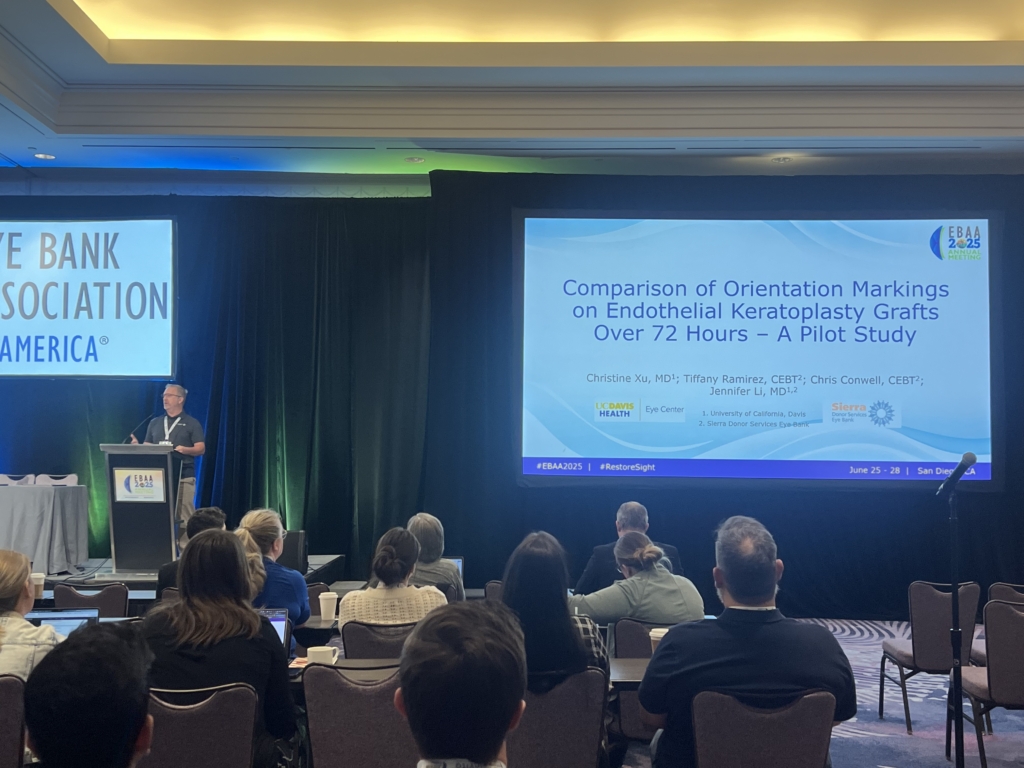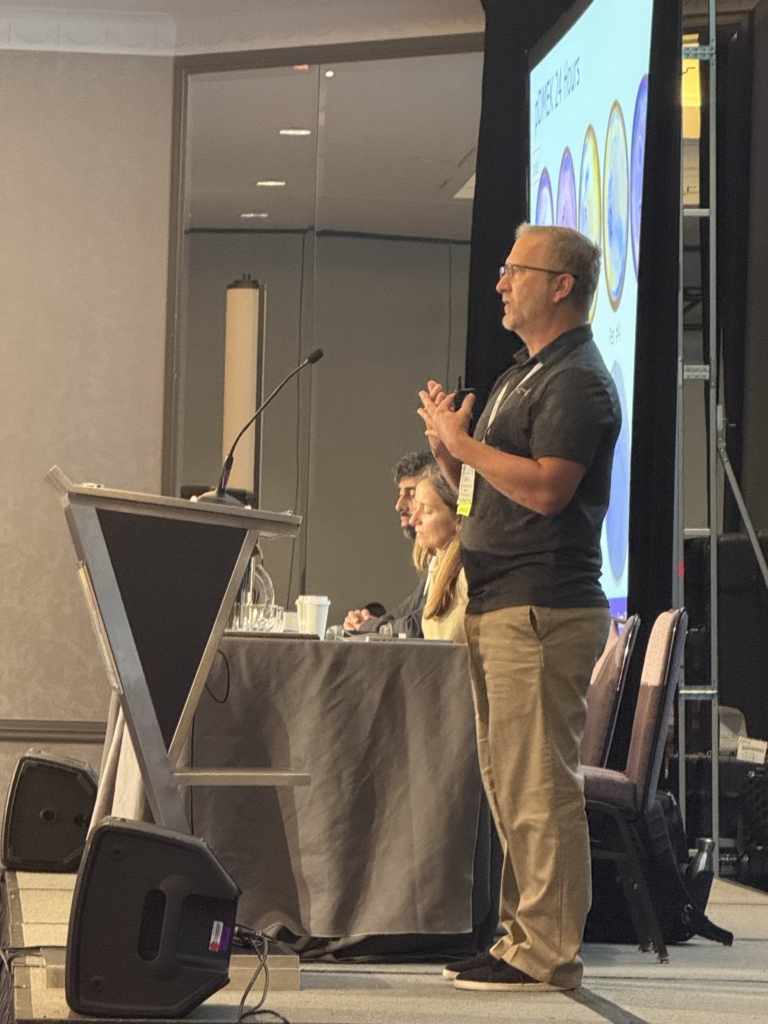Every year, in June, hundreds of professionals in eye banking gather at the Eye Bank Association of America Annual Meeting. This year, the event was hosted in Coronado, CA and featured dynamic workshops, concurrent sessions, and opportunities to network with other donation and transplantation professionals from around the world.
From the Leadership Workshop to Quality Assurance and DSAEK2.0, our team learned many new skills to make their work more efficient and effective. We were also able to engage with other professionals to talk about current issues and get helpful tips along the way.
Spending time with double cornea recipient, Christine, from Sacramento, CA.
Christine joined us on the EBAA Cruise in the San Diego Harbor and was able to meet each of our team members as well as the EBAA staff. We enjoyed dinner together and she was able to meet each of the processing technicians who prepared her tissue for surgery.
Christine was also invited to speak at the General Session at the EBAA Annual Meeting and share her inspiring story as the “everyday hero” for EBAAs national campaign during Eye Donation Month. Cornea donation has made a strong impact in her life and was a full circle experience for her as an ICU nurse who cares for transplant patients. She was joined on stage by Dr. Jennifer Li, from UC Davis, and her cornea transplant surgeon. Dr. Li shared how donor families are the reason she is able to give the gift of sight and that it is a privilege to work with eye banks throughout the donation process.

Sponsoring the Scientific Symposium and Presenting Research on Orientation Markings
We were honored to be the sponsors of the Scientific Symposium at the EBAA Annual Meeting. Speakers are invited to present their research at the symposium and this year there were 15 presentations that gave an update on Endothelial Cell Therapy in the U.S.
This year, our team presented on the “Comparison of Orientation Markings on Endothelial Keratoplasty Grafts Over 72 Hours.” Our research took about 6 months to complete as we compared 5 different surgical marking pens on multiple types of processed cornea tissue and in different tissue storage media types. We were able to conclude that of the five, one specific pen was best and that it sometimes takes over 24 hours to clearly see the orientation markings. We are continuing this research and are interested in minimizing endothelial cell loss with orientation markings as well.


We look forward to seeing everyone again next June in Indianapolis, IN at the 2026 EBAA Annual Meeting.